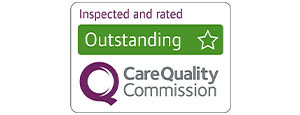Whenever a brand, individual, or organisation is in the public eye, Public Relations (PR) is going to come into play. PR is how these small businesses, public figures, and national organisations contribute to the conversation – how they talk back to their audience, and communicate their project and purpose.
And, in a world increasingly dominated by image, perceptions, and reputation, PR’s importance is continuing to grow.
However, there’s one sphere in which the importance of good PR is often overlooked yet is perhaps even more vital for success than it is for the commercial world – the non-profit sector. For charities, PR typically sits under the marketing umbrella; as such, it’s vital for supporting a non-profit’s marketing and income generation initiatives, as well as raising public awareness and engaging donors and volunteers.
Unlike their for-profit counterparts, charities rely almost exclusively on the generosity of the local community. For instance, ellenor must generate around £7 million each year to operate.
With supporters, donors, and volunteers providing their time, money, and skills to help ellenor raise this, the charity must ensure that every penny spent on marketing – or, in essence, all the money that’s not going directly to the care it provides – is scrutinised and accounted for. To demonstrate its integrity to the community, a charity must fulfil a two-pronged purpose: establishing its need for funds, whilst also being transparent about how they’re being used.
Here’s where PR comes in.
PR, at its core, refers to the set of strategies and tools a charity uses to influence public perceptions about it. It’s the way a nonprofit organisation speaks to its audience, presents its brand, and raises awareness around its services to the public. It’s about mitigating risk, managing reputation, and finding ever more effective ways of reaching – and making an impact on – the community.
With so many charities now leveraging a similar arsenal of tactics to engage donors – leaflet-dropping, bucket-shaking, door-knocking – PR can provide a crucial point of difference. If, that is, it’s done well.
For ellenor, PR, is also key for securing partnerships, as well as generating the funding it needs to continue its work with the life limited patients – and their families – that rely on it. It’s not about simply sharing what the charity does, but shouting about the real, tangible changes ellenor’s work brings – namely, helping local people and their families meet the challenges of life limiting illness head on.
So what does PR at ellenor look like in practice?
Firstly, it’s about utilising a wide array of channels to connect with the wide range of diverse demographics ellenor services within the Kent and Bexley communities. After all, ellenor – eschewing the common misconception that hospice care is ‘just for old people’ – serves babies, children, and adults of all ages.
These channels of communication include paid advertising (such as pay-per-click campaigns on search engines), email newsletters, direct mail promotions, and utilising various social media platforms to connect with ellenor’s audience. The charity also uses content marketing – such as news articles and case studies – to grow its organic supporter base, in addition to publishing search engine optimized (SEO) content to attract fresh interest.
The cultural and socio-economic makeup of ellenor’s local community also reflects this diversity. Religiously, Sikhs make up over 9% of the population, while, ethnically, the area is a melting point of people from black, white, Arab, and Asian backgrounds. This, of course, means that ellenor’s PR and core messaging needs to not only resonate with people of all ages and occupations, but those of all codes, creeds, and cultures, too.








